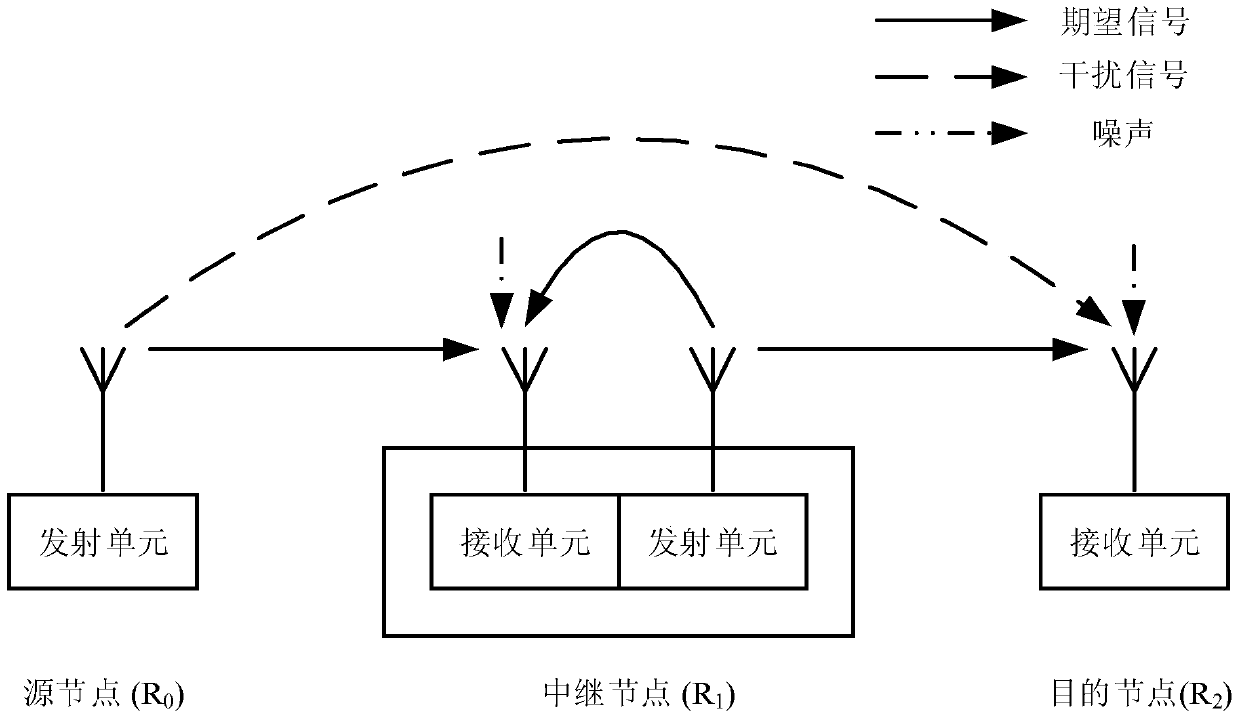Optimal power allocation method for double-hop full-duplex df relay system with limited total power
A relay system, the technology of optimal power, applied in the field of wireless transmission, can solve the problem of waste of wireless resources and so on
- Summary
- Abstract
- Description
- Claims
- Application Information
AI Technical Summary
Problems solved by technology
Method used
Image
Examples
specific Embodiment approach 1
[0044] Specific implementation mode 1: For the optimal power allocation method of the double-hop full-duplex DF relay with limited total power, the system model of the double-hop full-duplex DF relay system is as follows figure 1 As shown, the double-hop full-duplex DF relay system consists of a source node (R 0 ), the relay node (R 1 ) and the destination node (R 2 ), the signal propagation channel is a Rayleigh fading channel, assuming p i for node R i (i=0,1) the power of the transmitted signal, that is, the source node R 0 The transmit power is p 0 , the relay node R 1 The transmit power is p 1 , when the free-space propagation loss is not considered, the node R j (j=1,2) received from node R i (i=0,1) the average signal-to-noise ratio of the signal after the fading channel for:
[0045]
[0046] where Ω i,j is the mean square value of the modulus of the channel fading coefficient, N 0 is the noise power;
[0047] The realization process of described meth...
specific Embodiment approach 2
[0081] Embodiment 2: The value of the iteration accuracy threshold ε in step 5 of the method is less than or equal to 0.01. Other steps are the same as in the first embodiment.
PUM
 Login to View More
Login to View More Abstract
Description
Claims
Application Information
 Login to View More
Login to View More - R&D
- Intellectual Property
- Life Sciences
- Materials
- Tech Scout
- Unparalleled Data Quality
- Higher Quality Content
- 60% Fewer Hallucinations
Browse by: Latest US Patents, China's latest patents, Technical Efficacy Thesaurus, Application Domain, Technology Topic, Popular Technical Reports.
© 2025 PatSnap. All rights reserved.Legal|Privacy policy|Modern Slavery Act Transparency Statement|Sitemap|About US| Contact US: help@patsnap.com



